Disease in Egyptian mummies: the contribution of new technologies (The Lancet, 1997)
"For water contributes very much to health" Hippocrates
Palaeoparasitology (Memórias do Instituto Oswaldo Cruz, 2003)
►includes:
Malaria and deaths in the English marshes (The Lancet, 2006)
Malaria, mosquitoes and the legacy of Ronald Ross (Bull. WHO, 2007)
Plagues and People: Infectious and Epidemic Disease in History (University of California, Irvine, 2005)
Gaol and ship fevers [typhus] (Perspectives in Public Health, 2009)
►Cholera in
Report of the
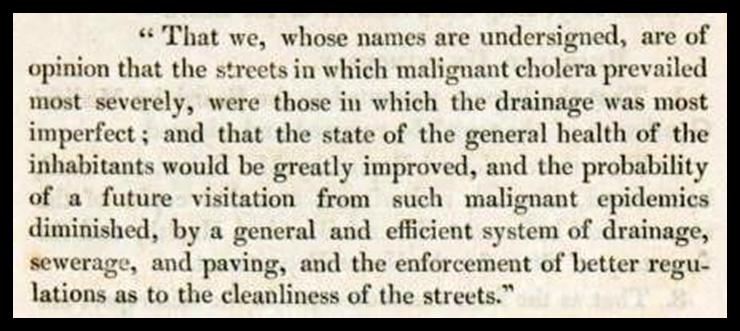
Cholera Inquiry Commission Report (15 July1854)
On 31 December 1853 a commission was established to inquire "into the causes which have led to, or have aggravated, the late outbreak of Cholera in the towns of Newcastle upon Tyne, Gateshead and Tynemouth."
Report on the Sanitary Condition of the Labouring Population of Great Britain by Edwin Chadwick, 1842 [University of Leeds Library: catalogue entry].
►See the Leeds Cholera Map and read about Leeds here.
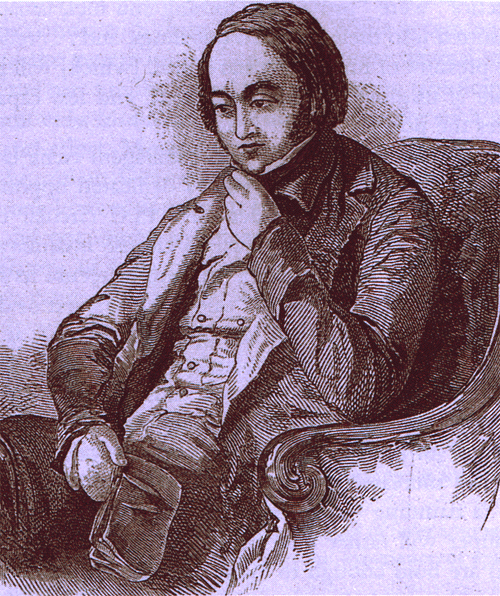 |
◄ Edwin Chadwick (1800−1890) in about 1848. Read the 1867 biography of Edwin Chadwick here.Short biography here. Sir Edwin Chadwick and inequalities (Public Health, 2006) |
Public Health Act 1848 See also comment in Bull. WHO (Nov. 2005)
BMJ, 29 August 1998, issue marking the 150th anniversary of the Public Health Act 1848:
1. Editorials: The Public Health Act of 1848 & From public health to the health of the public
2. Revolutions in public health: 1848, and 1998?
The life and doctrine of Sir Edwin Chadwick (The Lancet, 19 April 1924)
Edwin Chadwick and the Engineers, 1842−1854: Systems and antisystems in the pipe-and- brick sewers war (Technology and Culture, 1992)
City Chaos, Contagion, Chadwick, and Social Justice (Yale Journal of Biology and Medicine, 2007)
Charles Dickens and the movement for sanitary reform (Perspectives in Biology and Medicine, 2003)
The Condition of the Working-Class in England in 1844 (Frederick Engels, 1845)
The urban sanitary movement in England and Germany, 1838−1914: A comparison (Continuity and Change, 2000)
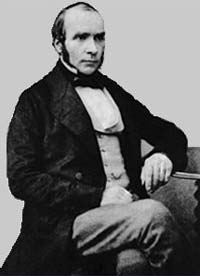 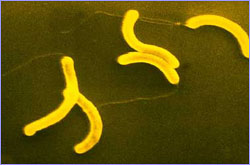 |
◄ John Snow (1813−1858) in the mid-1850s Short biography here. The UCLA John Snow website. The John Snow Society The John Snow pub in Soho, London Chronology of cholera Nineteenth century cholera posters ◄ Vibrio cholerae |
Map-making and myth-making in Broad Street: the London cholera epidemic,1854 (The Lancet, 2000)
The Medical Detective: John Snow and the Mystery of Cholera (Granta Books, 2006) − University of Leeds Library catalogue entry
The Ghost Map − A street, an epidemic and the two men who battled to save Victorian London (book for purchase only).
Watch Steven Johnson: A guided tour of the Ghost Map Sutherland, Snow and water: the transmission of cholera in the nineteenth century (International J. of Epidemiology, 2002)
Listen to: John Snow/Cholera (Microbeworld Radio, 2003)
Cholera Online: A Modern Pandemic in Texts and Images (US National Library of Medicine)
GLASGOW IN THE LATE
NINETEENTH CENTURY
"Another
evil with which Glasgow and all great industrial centres have to contend, and
which is now far from adequately met in our great cities, is the migration into
them of large numbers who, while they lived in the country, and were occupied
with rural work, had at all events some reasonable prospects of retaining
average health, but when enclosed in towns, and induced by the prospects of
better wages to take to different occupations, were extremely apt to sink into hopeless
poverty and irredeemable neglect of all the conditions of moderately good
sanitation" − Sir
William Gardiner, Preface to Public Health Administration in Glasgow (Memorial Volume to the Writings of
James Burn Russell), edited by A. K. Chalmers and published by James Maclehose and Sons,
Glasgow, 1905.
Principles of Sanitary Science and the Public Health, with special reference to the Causation and Prevention of Infectious Diseases, by W. T. Sedgwick (MacMillan, New York, 1902).
A Manual on Hygiene and Sanitation (Seneca Egbert, 5th edition, 1910) [starts on pdf page 8!]
The Sanitation of Cities (William D’Olier, 1921) [starts on pdf page 7!]
Sewers in the city: A case study of individual-level mortality and public health initiatives in Northampton, Massachusetts, at the turn of the century (Journal of the History of Medicine and Allied Sciences, 2005)
Health education and the public health of the future (Journal of Educational Sociology, 1929)
Medical History − Hygiene and Sanitation (Medical Sentinel, 2002)
Public health reform: Lessons from history (PICE, Municipal Engineer, 2006)
Mortality, Morbidity and Improvements in Water and Sanitation: Some Lessons from English History (background paper for HDR 2006)
'Parasites lost and parasites regained': Rockefeller Foundation's anti-hookworm campaign in Madras Presidency [in the 1920s] (EPW, 2007)
The Great Stink of Paris and the Nineteenth-century Struggle against Filth and Germs (Johns Hopkins University Press, 2006)
Water Management
Insights into Water Management: Lessons from Water and Wastewater Technologies in Ancient Civilizations (Proceedings of the 1st IWA International Conference, Crete, 2006, published in Water Science & Technology: Water Supply, 2007)
Water and Wastewater in Ancient Civilizations (2nd IWA International Conference, Bari, Italy, 28−30 May 2009)
Water and wastewater management technologies through the centuries (Water Science & Technology: Water Supply, 2010)
A brief history of water supply and wastewater management in ancient Greece (WST: Water Supply, 2010)
Sustainable water management practices: Lessons from ancient Sri Lanka (Water Policy, 2006)
Water Management and Early Civilizations: From Cooperation to Conflict (UNESCO)
Journal: Water History
www.waterhistory.org This is a very comprehensive site: Ancient Egypt, Greece, Rome, Maya, Inca, to mention a few. Read about water supply in medieval London.
Aquae Urbis Romae: Waters of the City of
Water, toilets and public health in the Roman era (Water Science & Technology: Water Supply, 2010)
The water supply and distribution system of the Nabataean city of Petra (Jordan), 300 BC - AD 300 (Cambridge Archaeological Journal, 2005)
Domestic and municipal water works in ancient Mediterranean lands (Geographical Review, 1931)
London's Private Water Vendors and Companies: 1580 to the Present Day (World Bank, 2005)
Learning from the Past: Delivery of water and sanitation services to the poor in nineteenth century Britain (WELL Briefing Note, 2005)
Water supplies and sewerage in Nottingham − development in the 19th century (University of Nottingham website) − see also: Disease and death.
Water, Time and European Cities: History Matters for the Futures (WaterTime Partners, 2005) Read the excerpt on Leeds.
Water and Ethics: A Historical Perspective (UNESCO, 2004)
Thirst: A Short History of Drinking Water (Duke Law School, 2006)
Some Lessons from the Historical Experience of Industrialised Countries in the Development of Modern Water Systems (UK National Audit Office, undated but 2000 or later)
Delivery of water and sanitation services to the poor in nineteenth century
A short history of soap (The Pharmaceutical Journal, 1999)
So Clean: Lord Leverhulme, Soap and Civilisation (Manchester University Press, 2008)
Environmental History of Water: Global Views on Community Water Supply and Sanitation (IWA Publishing, 2007)
|
The Pont du Gard, near
Remoulins in the south of France, was
built by the Romans in around 19 BC. It forms part of the 50-km
aquaduct which brought water to the city of Nemausus (now Nîmes).
Further information here. |
On-site sanitation
Sanitation and sociology (American Journal of Sociology, 1896)
Quote: “Sanitation and sociology must go hand in hand in their effort to improve
the [human] race”.
Latrines and cesspools of mediaeval London (Speculum, 1934)
Urban sanitation in preindustrial Japan (Journal of Interdisciplinary History, 1987)
Toilet Timeline (WTO webpage) − toilets from 2008 bc to the present day.
The History of Plumbing: Crete (Plumbing & Mechanical, 1989).
The Palace of Knossos on Crete has one of the earliest flush toilets:
Sanitation under the ancient Minoan civilization (Canadian Medical Association Journal, 1932)
Photograph of a Roman toilet.
The Development of the Flushing Toilet: Detailed Chronology 1596 Onwards
Toilets through the Ages (Plumbing & Mechanical, 1989)
History of Toilets (Sulabh International, 1995)
The Development of Toilets and Sanitation (BBC, 2001)
Book: Bogs, Baths and Basins: The Story of Domestic Sanitation (Sutton Publishing, 2002)
The History of Plumbing (Fox & Co., London)
Listen: Bathroom Blues Part 1 (Australian Broadcasting Corporation, 2003).
Part 2 is here. RealPlayer free download here.
Bucket latrines in England? Well, there were some in 1982: see them here. A Brief History of the Urinal (Down to Earth, CSE, 2010)
Sewerage and Wastewater Treatment
Toilets and Sewers in Mohenjodaro [~5,000 years ago!] See photos here.
More information here and here.
Sewerage in ancient and mediaeval times (Sewage Works Journal, 1940)
Urban wastewater and stormwater technologies in Ancient Greece (Water Research, 2005)
Water and Wastewater Systems in Imperial Rome
On the drainage of towns (Robert Rawlinson, 1852)
On the main drainage of
The treatment of town sewage (Arthur Jacob, 1871)
The sewage question (C. Norman Bazalgette, 1877)
Sanitation and Sanitary Engineering (Paul Gerhard, 1909)The Great Stink of London: Sir Joseph Bazalgette and the Cleansing of the Victorian Metropolis (Sutton Publishing, 2001 − the link is to Amazon.co.uk) [Book for purchase only]
In the
Sir Joseph William Bazalgette and "The Big Stink" (Newcomen Society, 1987) Short biography here.
The Sewer King
[Sir Joseph Bazalgette] − part of Seven
Wonders of the Industrial World (DVD set, BBC, 2004), available for loan from
From cesspool to sewer: sanitary reform and the rhetoric of
resistance, 1848–1880 (Victorian Literature and Culture, 2002)
Hidden beneath Our Feet: The Story of Sewerage in Leeds (1997)
Hidden Leeds (BBC Leeds, 2007)
George Leather, Jr (1786−1870), Engineer to the Leeds Waterworks Company (ICE, 2002)
Constructing a Pipe-Bound City: A History of Water Supply,
Sewerage, and
Excreta Removal in Norrköping and Linköping, Sweden, 1860−1910
(Linköping
University, 2002)
The Paris sewers and the rationalization of urban space (Transactions of the Insitute of British Geographers, 1999)
Sewerhistory.org
USA
William Dibdin and
the idea of biological sewage treatment (Technology
and Culture, 1988)
The Monster Septic Tank of Mr Donald Cameron (installed in Exeter, 1895) Cameron’s 1896 paper
on septic tanks:
Sanitation standards and the shaping of cities (LSE, 2004)
The Culture of Flushing: A Social and Legal History of Sewage (
The historical development of wet-weather flow management (US EPA, 1999)
Historical aspects of wastewater treatment (IWA Publishing, 2002)
The history of German wastewater treatment (European Water
Management, 1999)
Urban Wastewater Management in the
Sewage pollution and institutional and technological change in
the United States, 1830–1915 (Ecological
Economics, 2010)
From Pipe Dreams to
Tunnel Vision: Engineering Decision-Making and
Sydney's Sewerage System (PhD
thesis, University of New South Wales, 1989)
From
sewage farms to septic tanks: Trials and tribulations in Sydney (Journal
of the Royal Australian Historical Society, 1993)
Irrigation
Conquest of the Land through 7000 Years [
China: National Irrigation History (FAO)
Thackray Medical Museum, Beckett St, Leeds (adjacent to St James's Hospital) See the reconstruction of an early Victorian slum in the city.
The John Snow pub, Broadwick St, Soho, London; not a museum exactly but there's a good display about Snow in the bar on the first floor. Further info. here.
Gladstone Museum, Stoke on Trent
The 'Flushed with Pride' gallery tells the story of the toilet from those in slums of the 1840s to the toilets of the future.
The Crossness Pumping Station, London SE2 (well worth a visit! also: click on 'History') Additional information here. Videoclips here and here.
Musée des égouts de Paris − a 'must see' on your next trip! Videoclip here.
Sulabh International Museum of Toilets, New Delhi − more information here and
videoclip here.
The Art Museum Toilet Museum of Art − check out the beautiful photos at the John Michael Kohler Arts Center!
Not a museum, but a monument:
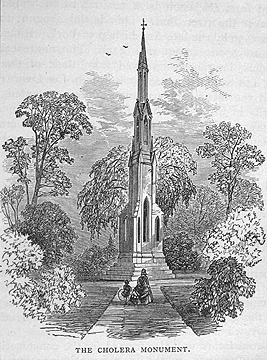 |
The Cholera
Monument of 1834 in Sheffield (the only one of its kind
in the UK) is dedicated to the memory of the 402 people of Sheffield who died in the cholera epidemic of 1832, most of whom are buried nearby. Restoration of the monument was completed in 2004 (photo here, or pdf version here). Further information here. |
Not History, but Modern Art!
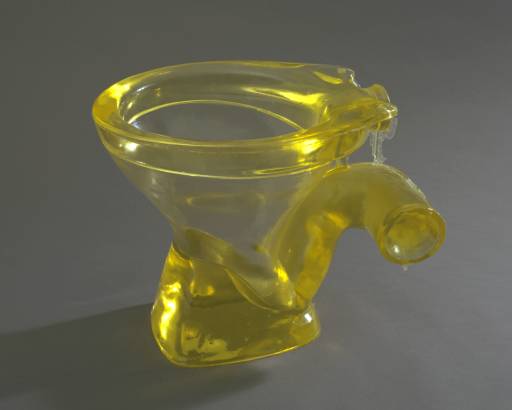 |
The Old In Out by Sarah Lucas, 1998 at the Tate Modern |
And did you know ...
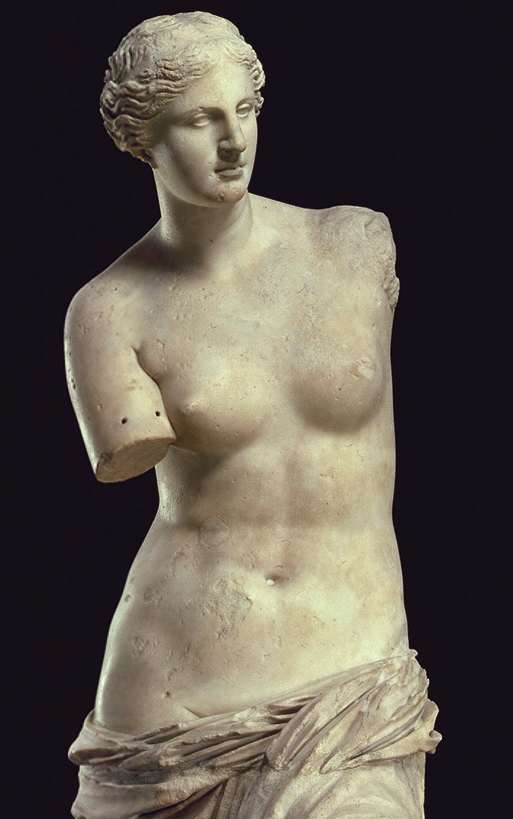 |
that Venus, the Roman goddess of Love, was also Venus Cloacina (or Sewer goddess), the goddess of the Cloaca Maxima, and that there was a shrine to her in the Forum? ►Further information here. The altar in the Venus Cloacina shrine is on this Roman 1d coin of 42 BC: 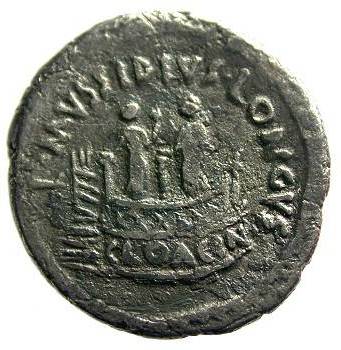 |
Environmental History Resources
Origins and Evolution of Global Environmental History, 1676-2000 (EPW, 2006):
Part 1 Part 2
Return to Microsoft Producer Index page Return to DDM homepage
